Understanding Polygon Shapes: Definition and Properties


Intro
In the realm of geometry, polygons hold a significant place due to their diverse forms and applications. A polygon is defined as a plane shape that is formed by connecting a finite number of straight line segments. Each line segment is known as a side, and they collectively create a closed figure. Understanding the properties and types of polygons gives insight into not only mathematical reasoning but also real-world applications.
This article will explore crucial aspects of polygon shapes, including their definitions, properties, various types such as regular and irregular polygons, and their relevance in everyday contexts. The goal is to foster a deeper comprehension of these fascinating geometric figures while providing clear explanations suitable for all readers.
Creative Activities
Engaging with polygons does not simply end with learning definitions. Actively participating in hands-on activities can greatly enhance the understanding of these shapes. Below are several craft ideas that children can replicate while learning about polygons.
Craft Ideas
- Polygon Collage: Gather colored paper, scissors, and glue. Children can cut out different polygon shapes and arrange them to form a creative collage.
- Geo Board: Use a wooden board and nails to create a grid. Children can use elastic bands or strings to form different polygons.
- Polygon Masks: Create masks by cutting out polygon shapes from cardboard and decorating them with paint or markers.
Step-by-Step Guides
- Polygon Collage:
- Geo Board:
- Polygon Masks:
- Collect different colored papers.
- Draw polygons on each paper and cut them out.
- Glue the shapes together on a blank sheet of paper.
- Discuss the types of polygons formed in the collage.
- Arrange nails into a grid pattern on the board.
- Use strings to create various polygons by connecting nails.
- Explain the characteristics of each polygon created.
- Cut a large polygon shape from cardboard.
- Create holes for the eyes.
- Decorate using markers, paints, and other craft materials.
Educational Value
These activities provide educational benefits such as:
- Developing spatial awareness and shape recognition.
- Encouraging creativity and problem-solving skills.
- Enabling children to actively engage with mathematical concepts.
Learning about polygons through craft enhances retention through interactive experience.
Engaging children in hands-on activities solidifies their understanding of geometric shapes through practical application.
Fun Quizzes
Quizzes can serve as an entertaining way to reinforce learning about polygons. Engaging quizzes include various topics.
Quiz Topics
- Definitions of polygons
- Properties of different polygon types
- Real-world examples of polygons
Question Types
- Multiple-choice questions to identify shapes
- Fill-in-the-blank questions regarding definitions
- True/False statements that challenge misconceptions
Knowledge Reinforcement
Quizzes effectively reinforce knowledge. They encourage recall and engagement, thereby solidifying the foundation of polygon concepts.
Fact-Based Articles
There is a great diversity of supplementary articles covering a wide range of polygon topics. This breadth of content enhances the learning experience considerably.
Topics
- Overview and classification of polygons
- The significance of polygons in various fields
- Real-life applications such as architecture and design
Engaging Content
Fact-based articles present information in an appealing and straightforward method. Readers can grasp complex concepts more easily due to clear language and logical organization.

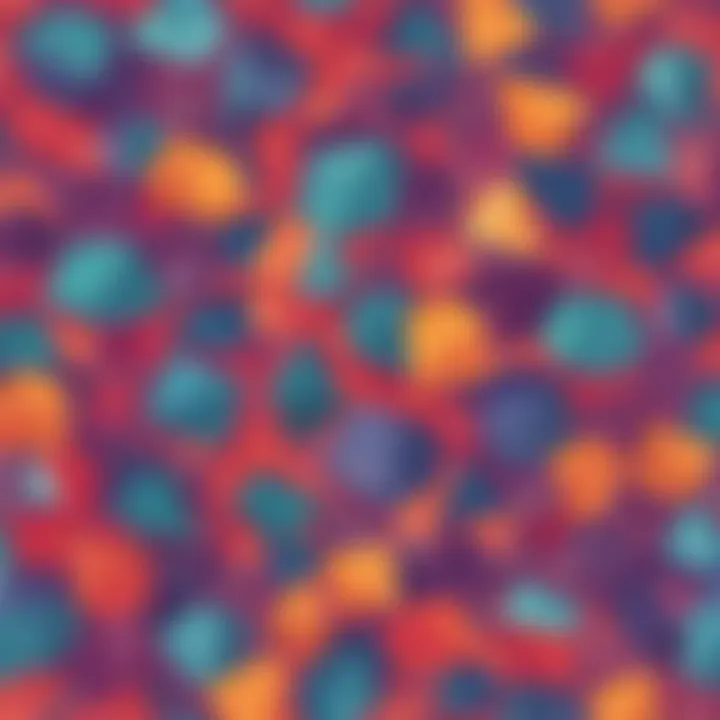
Intro to Polygons
Understanding polygons is fundamental in geometry. Polygons are not just abstractions or mathematical concepts; they form the very basis of various structures we encounter daily. From the design of buildings to the palatial beauty of ancient architecture, polygons shape our world. Their relevance spans disciplines, influencing art, engineering, and nature studies.
A polygon, simply put, is a flat shape with straight edges. It will serve as an anchor point to grasp further geometrical ideas. Recognizing polygons helps to develop spatial awareness and logical reasoning, essential skills for problem-solving.
What is a Polygon?
A polygon is defined as a two-dimensional geometric figure. It consists of a finite number of straight line segments connected end to end. Each line segment is called an edge, while the points where the edges meet are known as vertices.
The classification of polygons can occur based on several factors including their sides, angles, and regularity. Some examples include triangles, quadrilaterals, and pentagons. The characteristics of these shapes make them unique yet still relatable through their similarities.
Key Definitions:
- Vertices: The corners where two edges meet
- Edges: The straight lines between vertices
- Sides: Synonymous with edges; count of line segments
Thus, it is possible to perceive polygons by breaking down their structure. Understanding basic definitions enables further study into their properties and complexities.
Historical Context
The study of polygons dates back to ancient Greece, one of the most astute periods of mathematical discovery. The term “polygon” is rooted in the Greek words 'poly' meaning many and 'gon' meaning angles. Ancient mathematicians like Euclid played a significant role in systematically defining these shapes in his seminal work, Elements.
Throughout history, the appreciation for shapes has influenced global cultures. Various forms of architecture incorporated polygons into design long before modern technology. For instance, triangular structures proved robust in the construction of bridges and roofs. The pentagon, as seen in military architecture, symbolizes harmony and durability.
This historical insight enriches our modern understanding. Appreciating polygons not only enhances mathematical proficiency but also provides cultural context and appreciation.
The study of polygons is not just academic; it is fundamental to understanding the principles that govern the physical and conceptual structures within our world.
In summary, polygons serve as the building blocks of geometry, entwined within history, offering valuable lessons on structure and design. The next sections will explore their defining characteristics which deepen our connection to the subject.
Characteristics of Polygons
Understanding the characteristics of polygons is essential in geometry and helps in grasping various concepts related to shape and form. Polygons play a vital role as the foundation of more complex geometrical figures and are prevalent in mathematical properties, daily scenarios, art, and architecture. By dissecting polygons into their components—vertices, edges, angles, and side types—we gain a deeper appreciation of their structure and behavior.
Defining Vertices and Edges
A polygon defines itself through its collection of vertices and edges. Vertices are the points where two edges meet. Mathematically, a polygon consists of at least three vertices. The term “edges” refers to the line segments that link these vertices. For example, a triangle contains three vertices and three edges, while a quadrilateral involves four of each. Understanding these concepts is fundamental since the structure of the polygon hinges on them. Here are some key points:
- Each vertex connects to others through edges.
- The arrangement and number of vertices impact the shape's overall classification.
- More vertices generally imply more edges and a higher complexity of form.
Angles in Polygons
Angles significantly affect the polygon's properties and classification. Each angle is created where two edges converge at a vertex. The sum of all interior angles in a polygon can be calculated. For a polygon with n sides, the formula to determine the total interior angle is
This means:
- A triangle has a total of 180 degrees.
- A quadrilateral totals 360 degrees.
- A pentagon sums to 540 degrees.
Exterior angles exist too. The exterior angle is formed outside the polygon when one of its edges is extended. An interesting note is that the sum of all exterior angles, regardless of the polygon's type, always equals 360 degrees. Thus, understanding angles lets you associate not just the shape but also some important geometrical rules.
Types of Sides
The type of sides in a polygon varies extensively, leading to further classifications. Side types can be categorized based on their lengths and angles. Here are two primary classifications:
- Regular polygons have all sides of equal length and all angles equal. An example is a square.
- Irregular polygons feature sides and angles of varying lengths. An example would be a trapezoid.
Polygons can also be categorized based on the number of sides, such as triangles and hexagons. Observing the diverse side types helps to understand the range of polygons in shape and their classification.
Understanding these characteristics adds clarity to the broader topic of polygons and is the backbone that supports their application across various disciplines.
Thus, an exploration of these fundamental characteristics lays groundwork for discussing the variety and effectiveness of polygons in advanced mathematical applications and real-world scenarios.
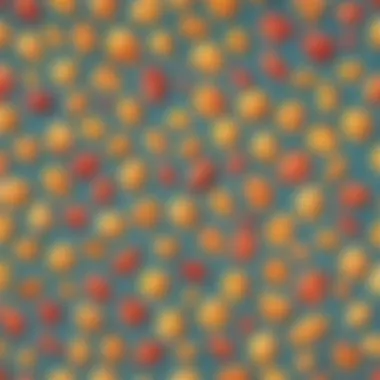
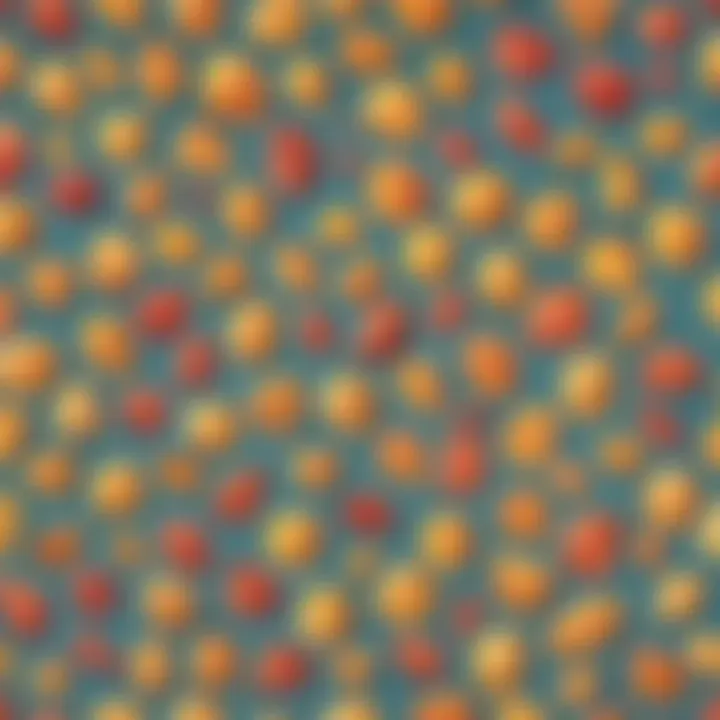
Types of Polygons
The concept of polygons is vast and varied, and exploring the types is an integral part of understanding their properties. Knowing the different classifications helps to clarify complex geometrical concepts, and this creates a solid foundation for additional mathematical exploration. The study of polygon types facilitates the recognition of patterns that connect geometry with real-world applications, such as art, engineering, and biology.
Regular versus Irregular Polygons
Regular polygons have all sides and angles equal, showcasing symmetry that is often aesthetically pleasing. These polygons, like the equilateral triangle or the square, simplify calculations of perimeter and area due to their uniformity. Irregular polygons, on the other hand, do not maintain equal length sides or angles. This diversity can make them more complex, yet serves to illustrate variations in geometry have a distinct utility. Understanding both types prepares students for various applications, particularly in real-world scenarios.
Convex and Concave Polygons
A convex polygon curves outward, where any line drawn between two points inside the shape will remain inside. A concave polygon, in contrast, has an inward dent, meaning some lines drawn could venture outside. Recognizing this difference is crucial in computational geometry and engineering where the structural integrity may depend on the polygon type. Each has its aspects in spatial reasoning that can deeply impact learning outcomes.
Common Polygon Examples
Triangles
Triangles are foundational to polygon study. They consist of three sides and are defined uniquely by their angles or side length. They present a good example of a polygon as their simple structure vastly influences further mathematical concepts, such as area calculation and graphing. A key characteristic is that every triangle can be classified into types. This classification supports various problem-solving strategies.
Quadrilaterals
Quadrilaterals contain four sides and can appear in diverse forms, including squares and rectangles. This feature provides various options for area calculation and permits students to analyze the interplay of sides and angles furthermore. The unique capability to encompass various properties and characteristics make quadrilaterals part of everyday geometry and its applications in planning and designs in architecture.
Pentagons
Pentagons, with five sides, introduce a splendid complexity in shape dynamics. Their feature of being present in ecology, such as in the structure of natural crystals, signifies their usefulness and importance. Besides, pentagons fit into tiling patterns supporting an engaging studies among geometrical structures.
Hexagons
Last but certainly not least, hexagons have proven to have immense significance, especially in mathematics and nature. They provide unique tessellation opportunities due to their angles and sides. In nature, beehives are a perfect demonstration of this; hexagonal structures are optimal for space efficiency. They encompass beneficial angles that promote practical approaches to solving equations.
Engaging with different types of polygons offers insight into their properties and connections to various fields.
In summary, understanding the different classifications of polygons lays essential groundwork for further study in mathematics and its application. Each type of polygon uniquely presents specific characteristics that promote overall comprehension of geometry.
Mathematical Properties of Polygons
Mathematical properties play a pivotal role in understanding polygons. They form the foundation for deeper geometric analysis and application. Knowledge of the mathematical attributes of polygons facilitates a better grasp of their behavior in both theoretical and real-world contexts. Furthermore, it aids in tackling problems involving geometric calculations, which are commonplace in various academic and practical scenarios.
Perimeter and Area Calculations
Calculating the perimeter and area of a polygon is essential in geometry. The perimeter is the total distance around a polygon. To find it, one simply adds the lengths of all sides. For polygons with regular sides, this can be simplified significantly as:
- Formula for Regular Polygons:Perimeter (P) = Number of sides (n) × Length of one side (s)
Calculating the area is a bit more complex. Each type of polygon requires its own specific formula. For instance:
- Triangle: Area = 1/2 × base × height
- Quadrilateral (rectangle): Area = length × width
- Regular Pentagon: Area = (1/4) √(5(5 + 2√5))s²
Understanding area and perimeter goes beyond mere calculations. They are vital for various disciplines like architecture, landscaping, and even data visualization. Recognizing how these properties apply to real situations encourages logical reasoning.
Interior and Exterior Angles
In polygons, angles play a significant role in defining their shapes and properties. Each polygon has both interior and exterior angles that have their own meaning and importance.
Interior Angles
Interior angles are the angles formed inside a polygon. The sum of the interior angles in a polygon can be found using the formula:
- Sum of Interior Angles:(n - 2) × 180°
Where n is the number of sides in the polygon. For example, a triangle (3 sides) has a sum of 180°, whereas a quadrilateral (4 sides) totals 360°.
Exterior Angles
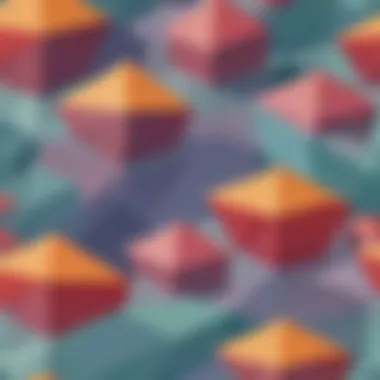
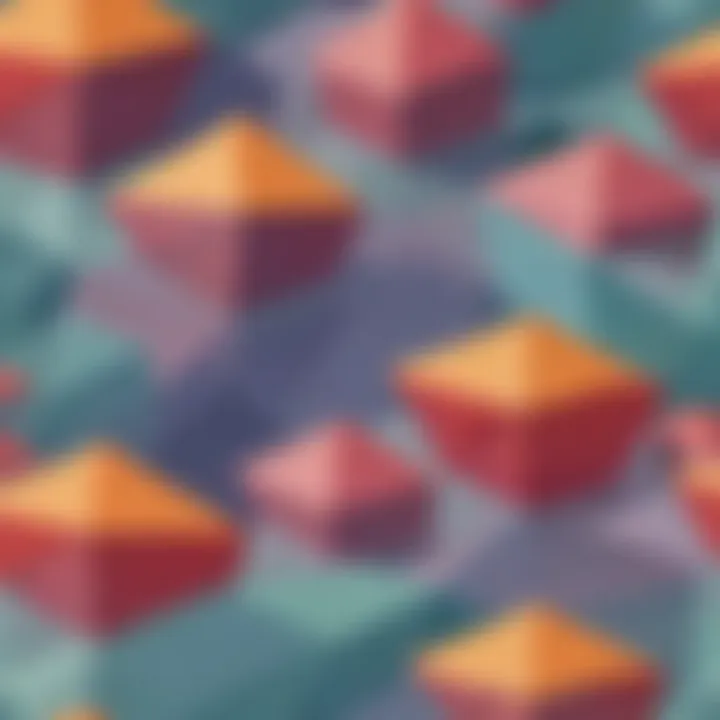
Exterior angles are those formed between one side of a polygon and the extension of its neighboring side. An important property of exterior angles is that the sum of exterior angles in any polygon is always 360°. This remains true regardless of the number of sides in the polygon.
Understanding the concepts of perimeter, area, and angles not only enriches mathematical knowledge but also extends its utility to various applied contexts, such as science, technology, architecture, and everyday problem solving.
Grasping these concepts aids students in reinforcing their skills and developing a concise problem-solving approach. Engaging students with real-world applications encourages learning and understanding through concrete examples.
Polygons in the Real World
Polygons hold an essential place in our everyday life and provide a bridge between elementary education and practical application. They are not mere definitions in geometry but dynamic shapes that appear in various facets of modern life. From the simplest shapes like triangles and rectangles to complex variations, understanding these forms extends beyond the academic realm. A deeper grasp of polygons allows individuals to relate geometrical concepts to the visual and structural elements surrounding them.
Architecture and Design
Within architecture and interior design, polygons serve a fundamental role in creating spaces that are not only functional but also aesthetically pleasing. The arrangement of polygons in a building can influence its stability, while also allowing for creative expression. For instance, architects utilize triangular trusses in roofs for their ability to evenly distribute weight. Likewise, quadrilaterals, such as rectangles and squares, are prevalent in the design of windows and rooms due to their simplicity and effectiveness in utilizing available space.
From iconic buildings like the Louvre Pyramid in Paris to everyday instances like book covers or floor tiles, polygons organize aspects of our environment. This organization reveals a parallel between geometry and art, where the intricate combination of angles and lines contributes to visual delight. Understanding these shapes helps learners appreciate how shapes transit function through design.
Nature and Polygons
Beyond constructed spaces, nature exhibits numerous polygonal structures, showcasing their significance outside the classroom. In natural settings, examples of polygons abound. Look at honeycombs created by bees. These are primarily hexagonal, providing a compact and effective layout for storage. Another example is the starfish, exhibiting pentagonal symmetry, offering insight into how polygons can also define biological formations.
Examining these occurrences allows us to see how polygons contribute to the resilience, efficiency, and beauty in nature. Observing natural arrangements helps to transform the abstract concept of polygons into tangible experiences, enriching students' understanding.
Engaging with polygons in both man-made and organic environments aids learners in realizing the broader narrative of geometry in daily life. Evaluating these shapes intimately connects academic knowledge to reality.
Learning and Teaching Polygons
Benefits of learning about polygons include:
- Improved Spatial Understanding: Recognizing different polygons allows students to better visualize shapes in their environment.
- Foundation for Advanced Topics: Polygons often lead to discussions about other geometrical concepts such as symmetry and transformations.
- Engagement through Activities: Teaching polygons can include hands-on activities, which tend to engage students effectively.
Considerations for teaching polygons effectively involve tailoring lessons to suit different learning styles. Inclusive activities and resources can contribute to improved retention of polygon concepts. Moreover, active discovery methods, wherein students participate hands-on, can prove invaluable. This increases interaction and ensures understanding.
Engaging Activities for Understanding Polygons
Offering engaging activities captures students' attention and reinforces their learning. Activities can vary in complexity depending on grades or skill levels. Here are some activities designed for young learners:
- Polygon Scavenger Hunt: Task students with finding real-world examples of polygons in their classroom or outside. They can document their findings through drawings or photographs.
- Create Your Own Polygon Art: Using colored paper or materials, ask students to create various polygons. This combines creativity with geometry.
- Polygon Matching Game: Develop a game where students match polygon shapes with the correct names and properties, promoting active learning.
A combination of these engaging activities helps solidify the relationship between polygons and shapes that children encounter in everyday life.
Resources for Educators
Educators looking to teach about polygons can benefit from assorted resources. Several materials and online tools can enhance their teaching strategies:
- Khan Academy: Offers free educational videos and exercises related to polygons.
- YouTube: Includes countless educational channels that provide visual understanding through animations and demonstrations.
- Printable Worksheets: Websites like education.com have workbooks and printables specifically tailored to polygon teaching.
- Classroom Manipulatives: Consider implementing tools such as geoboards or geometry software to let students explore polygon shapes physically or digitally.
Providing these resources gives educators the great ability to reinforce polygonal concepts and stimulate engagement among their students.
Epilogue
The Importance of Polygons in Education
Polygons serve as an important foundational element in mathematics education. Understanding these shapes helps students grasp key concepts in geometry and spatial reasoning. Educators acknowledge polygons as being both vital and accessible. They allow students to learn about shapes, angles, and symmetry in an engaging manner. With a strong grasp of polygons, students build a framework upon which more complex ideas can be constructed.
Polygons like triangles and quadrilaterals often come up in various educational activities. These shapes not only represent geometrical principles, but also introduce students to problem-solving skills. Engaging young learners through activities such as drawing or constructing polygon shapes with physical materials reinforces learning. Studies indicate that hands-on experiences deepen comprehension, encouraging learners to think critically about geometric relationships.
“Polygons are the building blocks of understanding geometry.”
This highlights the significance of polygons in learning environments. Their prevalent use in everyday life—from tracing roadmaps to creating art—enhances student relevance and intrigue, connecting concepts in geometry to broader everyday experiences.
Future Exploration of Polygons
The future of polygon studies crosses paths with technology. Digital tools have the potential to revolutionize how learners understand and interact with shapes. Applications enable dynamic geometry software to create and manipulate polygons live, inciting astute observations about properties such as symmetry, transformations, and congruence.
Moreover, as artificial intelligence advances, systems may analyze polygon-based problems better than ever. Alongside this, knowledge of polygons grows in importance with the rise of data visualization. Real-world datasets often rely on geometrical patterns, wherein polygons illustrate crucial information effectively.
Looking further ahead, academics may integrate architectural design elements with geometry classes, allowing students to envision a landscape filled with varied shapes. Concepts in physics can intersect, as particles may adopt polygon-like arrangements under certain conditions—a burgeoning field in both physics and mathematics.
Polygons inspire an enduring curiosity. Their applications stretch across disciplines—from engineering to art. Therefore, engaging students in ongoing discussions and explorations around polygons ensures that they remain relevant. Encouraging high-level critical thinking about shapes fosters a deeper competency in mathematics, readying young minds for vast and varied future frames of thought.







